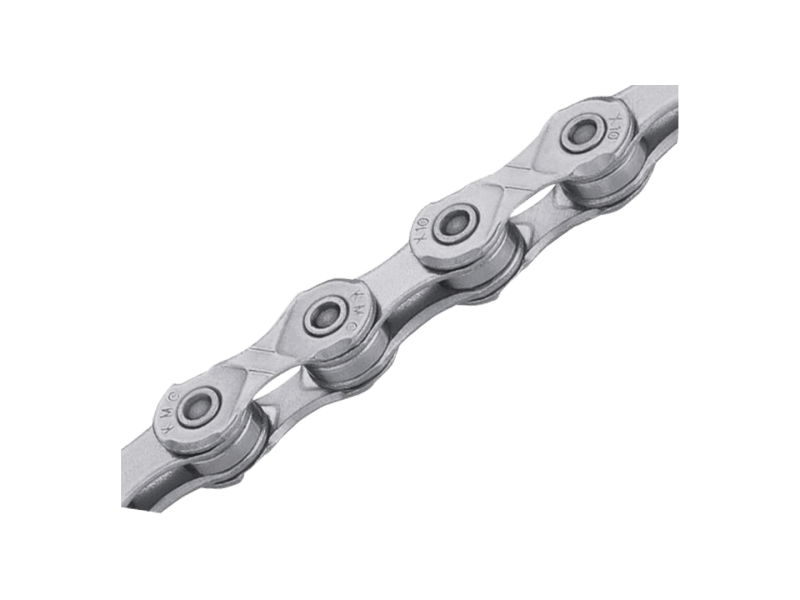A bicycle cannot stand on its own because it lacks a stable base and balance. It requires support or motion to remain upright.
Bicycles are fascinating machines that combine simplicity and efficiency. Their design hinges on basic principles of physics and engineering. A bike remains upright while moving due to dynamic stability. The wheels generate a gyroscopic effect, which helps maintain balance. At rest, a bicycle needs a kickstand or external support.
This is because the center of gravity and narrow base make it prone to tipping over. Understanding these fundamentals can enhance your cycling experience and appreciation for this remarkable mode of transport. Whether you’re a casual rider or a cycling enthusiast, knowing the science behind your bike can be both interesting and beneficial.

Credit: www.gatesnotes.com
Physics Of Bicycle Balance
Have you ever wondered why a bicycle cannot stand on its own? The answer lies in the fascinating world of physics. Understanding the balance of a bicycle involves exploring two main concepts: the center of gravity and the gyroscopic effect.
Center Of Gravity
The center of gravity is the point where the entire weight of the bicycle is concentrated. It is usually located near the middle of the bicycle, between the wheels. When a bicycle is stationary, it becomes challenging to keep the center of gravity directly above the wheels.
If the center of gravity shifts even slightly, the bicycle will tip over. This happens because the weight is no longer balanced. To keep a bicycle upright, the rider needs to adjust the position constantly. The rider's movements help keep the center of gravity aligned.
Gyroscopic Effect
The gyroscopic effect plays a crucial role in bicycle balance. When the wheels of a bicycle spin, they create a force known as angular momentum. This force helps to stabilize the bicycle and resist tipping.
The faster the wheels spin, the stronger the gyroscopic effect becomes. This is why it's easier to balance a bicycle when riding at higher speeds. At lower speeds, the gyroscopic effect is weaker, making it harder to keep the bicycle upright.
Here’s a simple breakdown of the gyroscopic effect:
- Angular Momentum: The spinning wheels create a stabilizing force.
- Speed: Faster spinning wheels generate more stability.
- Balance: Helps the rider maintain an upright position.
| Concept | Description |
|---|---|
| Center of Gravity | The point where the bicycle's weight is balanced. |
| Gyroscopic Effect | The stabilizing force created by spinning wheels. |

Credit: www.theproscloset.com
Role Of Rider In Stability
A bicycle cannot stand on its own because of the physics involved. The rider plays a crucial role in keeping the bicycle stable. Their body movements and balancing techniques are essential for preventing the bicycle from falling.
Body Movements
Riders use their body movements to maintain balance. Leaning left or right helps counteract the bicycle's natural tendency to fall. This continuous adjustment keeps the bicycle upright.
Small shifts in the rider's weight are important. Even slight movements can make a big difference. These adjustments are often made subconsciously by experienced riders.
Balancing Techniques
Riders use various balancing techniques to stay upright. One common method is to steer into a fall. If the bicycle starts to fall left, the rider turns the handlebars left.
Another technique involves adjusting speed. Faster speeds create more stability. This is why beginners often find it harder to balance at slow speeds.
Hand positioning also aids in balance. Holding the handlebars firmly allows for quicker adjustments. This helps in maintaining control over the bicycle.
Influence Of Bicycle Design
The design of a bicycle plays a crucial role in its stability. Two key factors are frame geometry and wheel alignment. These elements determine how a bicycle behaves when stationary.
Frame Geometry
The frame geometry includes the angles and lengths of the bike's tubes. It affects the bike's center of gravity.
- Top Tube Length: Affects rider position.
- Head Tube Angle: Influences steering.
- Seat Tube Angle: Changes pedaling efficiency.
A bike with a low center of gravity is more stable. A higher center of gravity makes it easier to tip over.
Wheel Alignment
Wheel alignment is crucial for balance. Misaligned wheels can cause instability.
| Factor | Effect on Stability |
|---|---|
| Wheelbase | Longer wheelbase adds stability. |
| Trail | More trail improves straight-line stability. |
Proper wheel alignment ensures the bike can roll smoothly. Misalignment can make the bike wobble.
Impact Of Speed On Balance
The speed of a bicycle greatly affects its balance. Understanding this can help riders improve their cycling skills. Let's explore how speed influences stability.
Low-speed Instability
At low speeds, a bicycle struggles to stay upright. The rider must constantly adjust the handlebars. This is due to the bicycle's gyroscopic effect being minimal at slow speeds.
Here are some key points to consider:
- The wheels spin slowly, offering less stability.
- Riders need to steer more to maintain balance.
- Small movements can cause the bike to tip over.
High-speed Stability
At higher speeds, a bicycle becomes more stable. The gyroscopic effect of the wheels increases, helping the bike stay upright.
Important factors for high-speed stability include:
- The wheels spin faster, creating a stabilizing force.
- Less handlebar adjustments are needed to keep balance.
- The bike can maintain a straight path more easily.
Here's a table to summarize the differences:
| Speed | Stability | Rider Effort |
|---|---|---|
| Low Speed | Poor | High |
| High Speed | Good | Low |
Understanding these principles can help cyclists ride more efficiently and safely.
Ground Interaction
Understanding why a bicycle cannot stand on its own involves the concept of ground interaction. The way the ground interacts with the bicycle's tires plays a crucial role. Let's explore this in detail.
Friction Forces
Friction forces are vital in keeping a bicycle stable. When a bicycle moves, friction between the tires and the ground provides stability. But when the bicycle is stationary, these forces are not enough to keep it upright.
Imagine the bicycle's tires as two points touching the ground. The friction at these points is minimal when the bicycle is still. This is because friction depends on the weight and surface area in contact. For a bicycle, the contact points are very small.
Without enough friction, the bicycle cannot resist falling over. The balance is delicate, and any slight movement can tip it over. This is why you need to hold the bike or use a stand when it's not moving.
Surface Texture
The surface texture of the ground also affects a bicycle's ability to stand. Smooth surfaces provide less grip for the tires. Rough surfaces offer more friction but can still be insufficient.
Consider riding on a smooth tile floor compared to a gravel path. On the tile floor, the bicycle slips easily because the surface lacks texture. On the gravel, the tires grip better but still don't prevent tipping over when stationary.
A table can help illustrate how different surfaces interact with the tires:
| Surface Type | Friction Level | Stability |
|---|---|---|
| Tile | Low | Very Unstable |
| Asphalt | Medium | Unstable |
| Gravel | High | Still Unstable |
As the table shows, different surfaces offer varying levels of friction. Yet, even the highest friction surface cannot keep a bicycle standing on its own.
- Friction forces are too weak when a bicycle is stationary.
- Surface texture impacts tire grip but not enough to maintain balance.
Understanding these factors helps explain why you need to balance or support a bicycle when it is not in motion.
Environmental Factors
Environmental factors play a key role in why a bicycle cannot stand on its own. These factors include wind resistance and terrain slope. Understanding these can help you grasp the science behind a bicycle's stability.
Wind Resistance
Wind resistance can push a bicycle over. Even a gentle breeze can make it wobble. Strong winds exert force on the bicycle. This force disturbs its balance. The bike tips over as a result.
A standing bicycle has a small contact area with the ground. Wind easily pushes against its frame. This makes it unstable. Windy conditions are especially challenging. They make it hard for a bike to stay upright.
Terrain Slope
The slope of the terrain also affects a bicycle's stability. Flat ground provides a better chance for standing. On a slope, gravity pulls the bike downhill. This pull makes it harder for the bike to stay upright.
Even a slight incline can cause problems. The bike will lean and eventually fall over. On uneven ground, the contact points are fewer. This makes balance even more difficult.
| Factor | Effect on Bicycle |
|---|---|
| Wind Resistance | Pushes the bike over, especially in strong winds. |
| Terrain Slope | Makes the bike lean and fall due to gravity. |
Historical Insights
The journey of the bicycle has been fascinating. Early designs and stability issues shaped today's bikes. Let's delve into the past to understand this.
Early Bicycle Designs
Early bicycles were simple yet innovative. The Draisine, invented by Karl Drais in 1817, had no pedals. Riders pushed their feet against the ground. This design was basic and lacked stability. Next came the Penny-farthing with its large front wheel. While it looked impressive, it was hard to balance. The high center of gravity made it prone to tipping.
Evolution Of Stability
Stability improved over time. The Safety Bicycle, introduced in the 1880s, had equal-sized wheels. This design lowered the center of gravity. It became easier to balance and ride. The addition of the chain drive further stabilized the bicycle. Brakes and pneumatic tires also enhanced control and comfort.
Today, modern bicycles are marvels of engineering. They combine the lessons of the past with advanced materials and designs.
Future Innovations
As technology advances, new innovations aim to solve the age-old problem of bicycle stability. These future innovations promise to make bicycles safer and more user-friendly.
Self-balancing Technologies
Self-balancing technologies are at the forefront of these advancements. These systems use sensors and gyroscopes to keep the bicycle upright. They adjust the bike's balance automatically, making it easier for riders. Imagine a bicycle that can balance itself at a stoplight. This would be a game-changer for urban commuters.
One exciting development is the self-balancing bike by Google X. This bike uses machine learning to stay upright. Another example is the GyroCycle, which employs gyroscopic technology. These innovations reduce the risk of falling, especially for new riders.
Advanced Materials
Advanced materials also play a significant role in future bicycle designs. New materials can make bikes lighter and more stable. For example, carbon fiber is both strong and lightweight. It allows for better control and balance.
Another promising material is graphene. It is incredibly strong and flexible. A graphene frame can absorb shocks better, keeping the bicycle steady. These materials not only improve balance but also enhance the overall riding experience.
Here is a table of some advanced materials and their benefits:
| Material | Benefits |
|---|---|
| Carbon Fiber | Lightweight, Strong |
| Graphene | Flexible, Shock-Absorbing |
| Titanium | Durable, Corrosion-Resistant |
These advanced materials and self-balancing technologies are paving the way for the bicycles of the future. They promise a safer and more enjoyable riding experience for everyone.

Credit: www.quarkexpeditions.com
Frequently Asked Questions
Why Can't A Bicycle Stand Still?
A bicycle can't stand still due to its need for forward momentum. Without movement, it lacks the balance provided by gyroscopic and inertia forces.
How Does Balance Work On A Bicycle?
Balance on a bicycle involves gyroscopic effects and steering adjustments. These help in maintaining stability when it's in motion.
What Forces Keep A Bicycle Upright?
Gyroscopic forces and steering inputs help keep a bicycle upright. These forces are effective only when the bicycle is moving.
Does Speed Affect Bicycle Balance?
Yes, speed positively affects bicycle balance. Higher speeds increase gyroscopic forces, making it easier to maintain stability.
Conclusion
A bicycle's inability to stand on its own is a fascinating scientific fact. This phenomenon is due to the principles of balance and physics. Understanding these principles can enhance our appreciation of everyday objects. Next time you see a bicycle, remember the science behind its need for support.

No comments:
Post a Comment